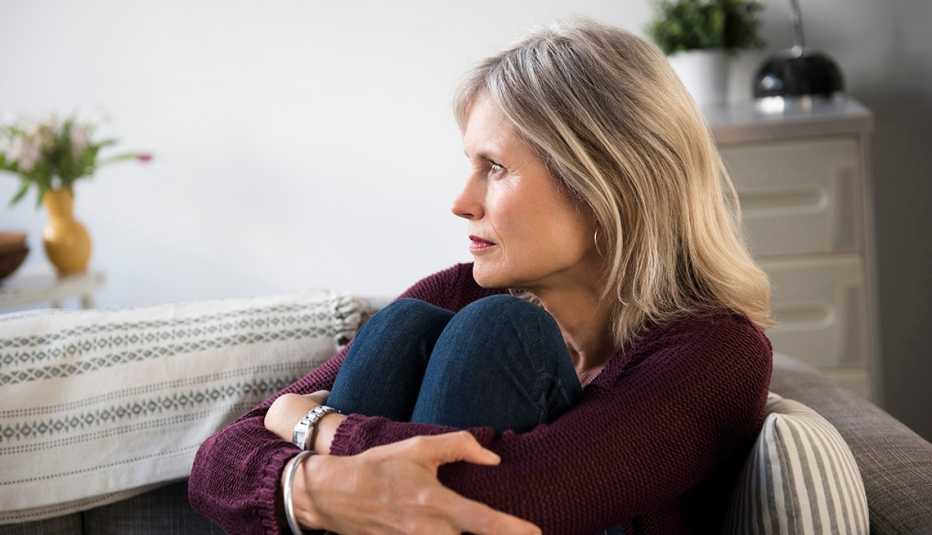Staying Fit


Yes, there are people whose brains are genetically wired to love thrills and risks. There was even a pop phrase for them that emerged a few decades back — Type T personalities. But for the majority of us, fear is hardly a favorite emotion. That doesn’t mean we don’t appreciate its role in protecting us from threats. The pounding heart and rapid breathing that accompany fear are important to the body’s “fight or flight” response, which helps us take quick action in a crisis — and then, ideally, get back to a fear-free everyday life.
Anxiety — best defined as worrying about a potential threat — can be protective too. “Anxiety is a normal human emotion,” says Robert Hudak, M.D., associate professor of psychiatry at the University of Pittsburgh. “Without anxiety, you wouldn’t buckle your seatbelt on the way to work in the morning. You wouldn’t look both ways before crossing the street.”


AARP Membership— $12 for your first year when you sign up for Automatic Renewal
Get instant access to members-only products and hundreds of discounts, a free second membership, and a subscription to AARP the Magazine.
Anxiety can become a problem when “the fear is out of proportion to the real threat,” says Danielle Cooper, an assistant professor of clinical psychiatry at the Center for the Treatment and Study of Anxiety at the University of Pennsylvania. When a person chronically feels anxiety beyond what is reasonable and it interferes with normal life, doctors often diagnose this as an anxiety disorder. Symptoms include a pervasive sense of distress and physiological signs such as muscle tension, a rapid heartbeat, insomnia, stomach upset and shortness of breath. With an anxiety disorder, “the nervous system reacts as if there’s a threat in the environment, when little or none exists,” Hudak says.
The good news about anxiety disorders? They are treatable, at any stage of life.
Risk factors and triggers
Anxiety disorders can affect anyone, at any time in life, but there are predisposing factors, including a family history of anxiety, certain personality traits, stressful life events and social isolation. Women are more likely than men to suffer from an anxiety disorder, according to the National Institute of Mental Health.
Corina Laudate, a clinical social worker at McLean Hospital in Belmont, Massachusetts, often sees among her older clients a “cumulative experience of loss and change” at the root of anxiety. “It might be a series of events throughout a lifetime,” she says, or a more recent cascade, such as back-to-back medical illnesses and the loss of a spouse.
Aging-related health changes can provoke anxiety, too. People who have trouble hearing, for instance, might start worrying about not being able to join in conversations. In fact, older adults with hearing loss are more likely to have anxiety, research shows. Loss of physical functioning, or the ability to move about with ease, is another common trigger, says psychiatrist Ramaswamy Viswanathan, M.D., president elect of the American Psychiatric Association. Losing muscle strength can lead to a fear of falling, which can lead to moving less and being more afraid of falling — and so on, in a downward spiral. Concerns about limited finances and losing independence can weigh on older adults, too.
Having more time on your hands can cause long-buried worries to bubble up. “When you're busy, [they] might not be at the forefront of your mind,” Cooper says. But when you retire or are otherwise freed up from preoccupations, issues you avoided might get a foothold, triggering anxiety.
Common anxiety disorders
There are four common types of anxiety disorders:
1.) Generalized anxiety disorder
People who have generalized anxiety disorder, or GAD, worry intensely about lots of things and tend to expect the worst. They have a hard time containing their fear, even when they realize it’s not rational. People with GAD may try to control situations and believe, consciously or unconsciously, that worrying somehow protects them.
GAD is the most common type of anxiety disorder in older adults. Besides worry, symptoms include irritability, trouble sleeping, a rapid heart rate, rapid breathing, weakness or fatigue and difficulty concentrating. Ongoing headaches or stomachaches are also common.





































































More From AARP
Anxiety vs. Depression: How to Tell the Difference
The two mood disorders often occur togetherMental Well-Being
Four challenges to manage emotions, boost resilience, practice mindfulness and pursue happiness, all at Staying Sharp®
Brain Health Resource Center
Tips, tools and explainers on brain health from AARPRecommended for You